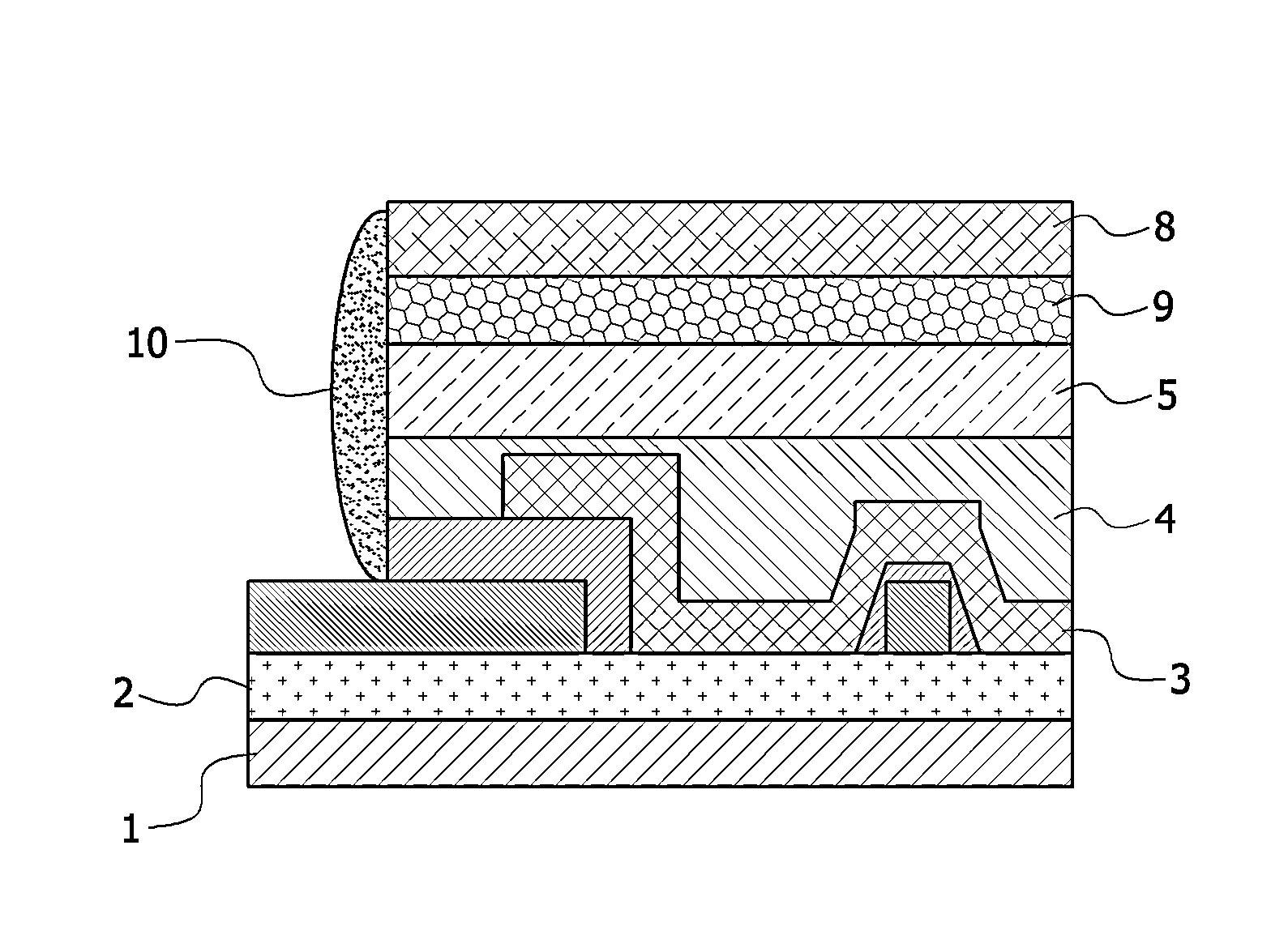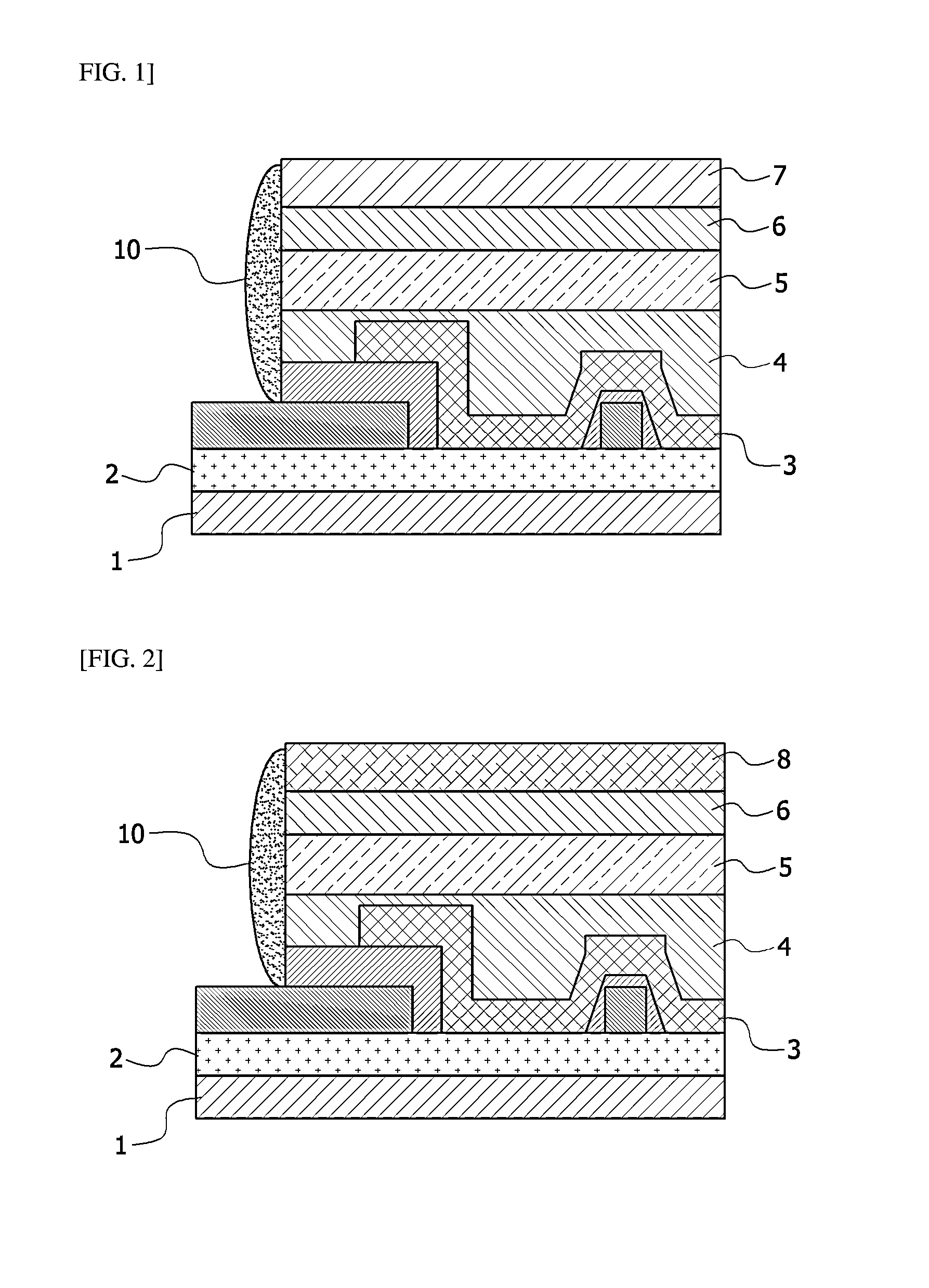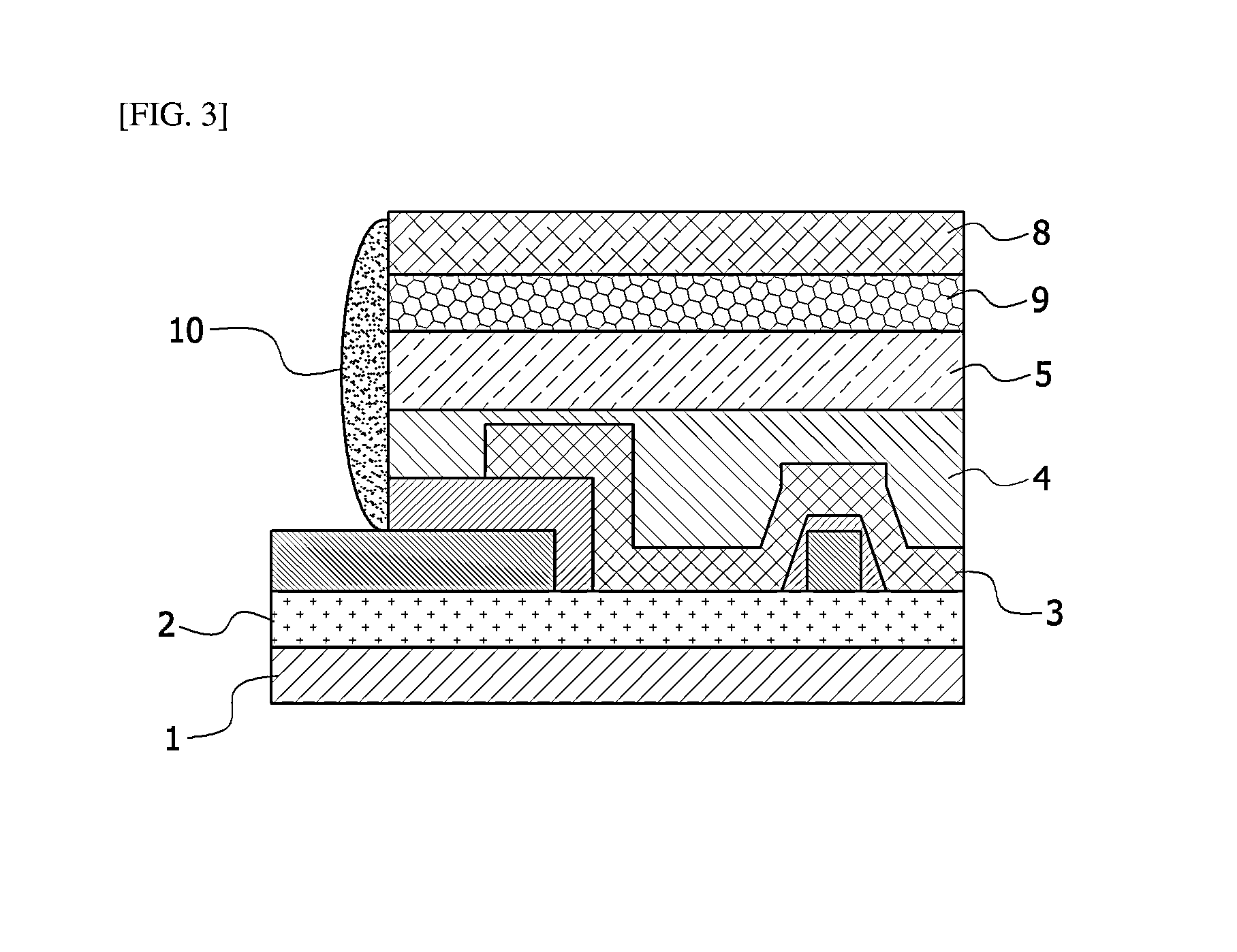Organic light emitting device comprising encapsulating structure
a light emitting device and organic technology, applied in the direction of thermoelectric devices, electroluminescent light sources, electric lighting sources, etc., can solve the problems of diode deterioration, oled the diode is very vulnerable to physical impact and durability degradation, so as to prevent the deterioration of the diode and the failure of the diode while running. , excellent water and oxygen barrier
- Summary
- Abstract
- Description
- Claims
- Application Information
AI Technical Summary
Benefits of technology
Problems solved by technology
Method used
Image
Examples
example 1
[0033]A 2-stack white OLED including a light-emitting region having an area of 50×50 mm2 was manufactured by sequentially forming a first electrode (ITO) to a second electrode (Al), listed in the following table, on a substrate. The substrate used herein does not have a separate auxiliary electrode. Materials for HIL, HTL, EML, ETL, CGL, HBL and EIL were those conventionally used in the field of manufacturing a white OLED, and the manufacturing method was also generally known in the art.
[0034]A 20 μm-thick water barrier film containing clay and having a water vapor transmission rate of approximately 1×10−2 g / m2 day was formed on the entire surface of the second electrode (Al). A soda-lime glass was formed to a thickness of 0.8 mm on the formed water barrier film. Afterward, side surfaces of the OLED device, the water barrier film and the soda-lime glass, which were formed on the substrate, were sealed using an epoxy resin.
example 2
[0035]An OLED was manufactured as described in Example 1, except that a metal foil was formed of 2 mm-thick aluminum instead of the soda-lime glass.
example 3
[0036]An OLED was manufactured as described in Example 1, except that a conductive film including carbon black filler was formed to a thickness of 20 μm instead of the water barrier film, and a metal foil was formed of 2 mm-thick aluminum instead of the soda-lime glass.
PUM
 Login to View More
Login to View More Abstract
Description
Claims
Application Information
 Login to View More
Login to View More - R&D
- Intellectual Property
- Life Sciences
- Materials
- Tech Scout
- Unparalleled Data Quality
- Higher Quality Content
- 60% Fewer Hallucinations
Browse by: Latest US Patents, China's latest patents, Technical Efficacy Thesaurus, Application Domain, Technology Topic, Popular Technical Reports.
© 2025 PatSnap. All rights reserved.Legal|Privacy policy|Modern Slavery Act Transparency Statement|Sitemap|About US| Contact US: help@patsnap.com



